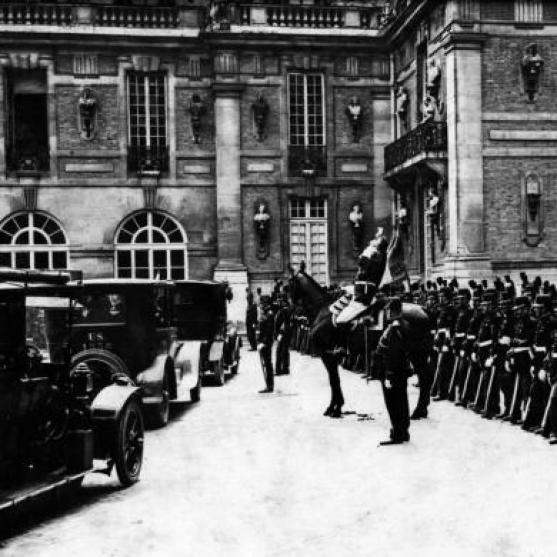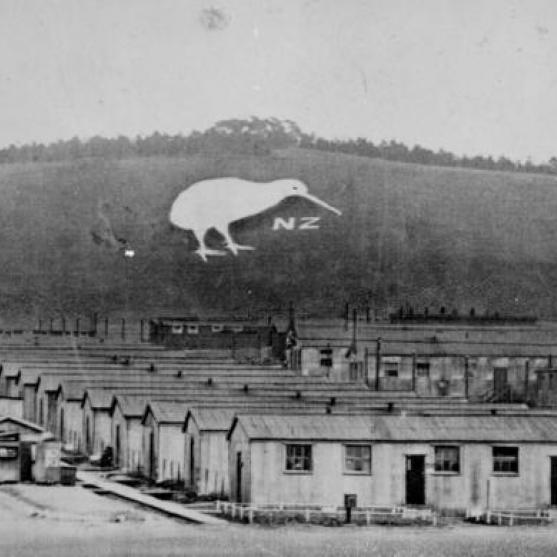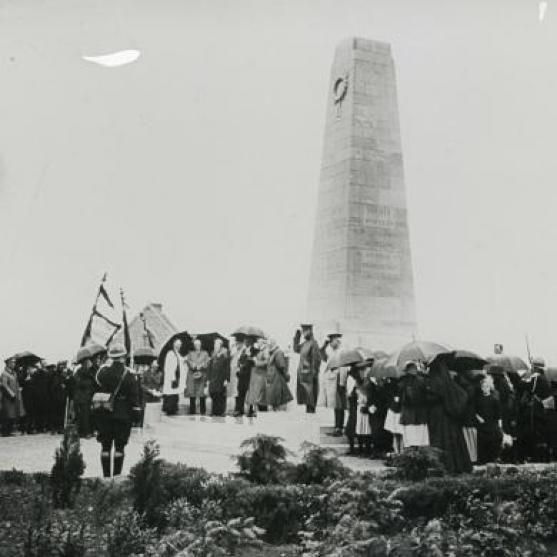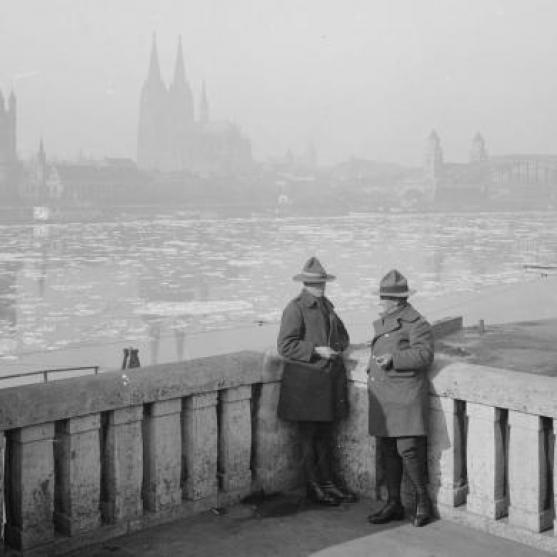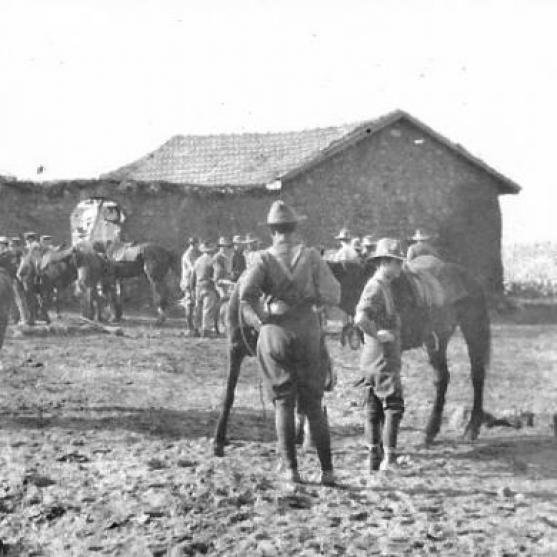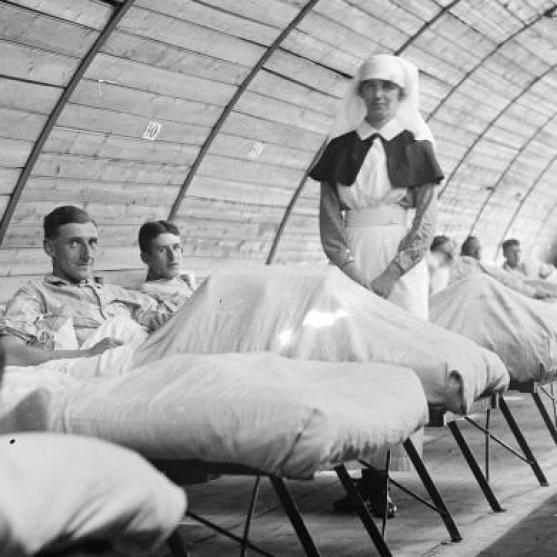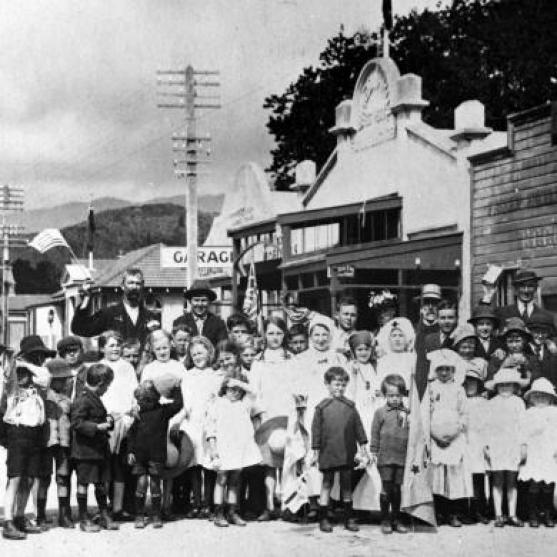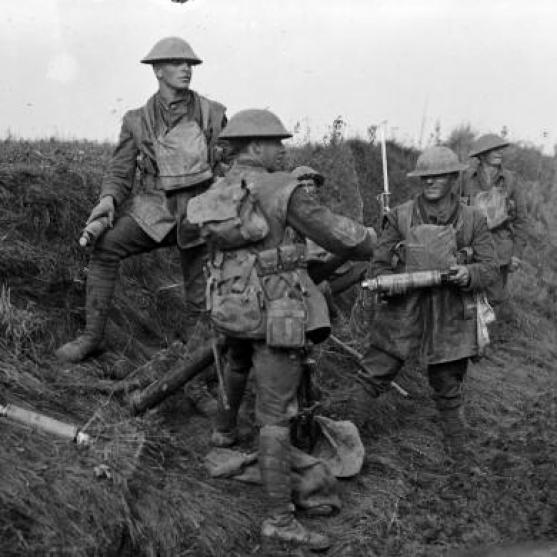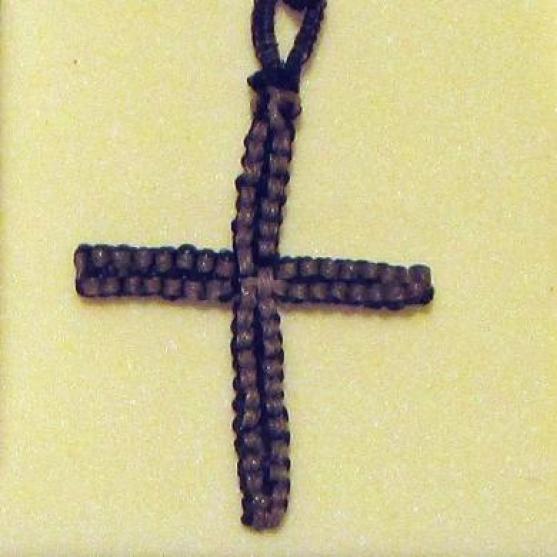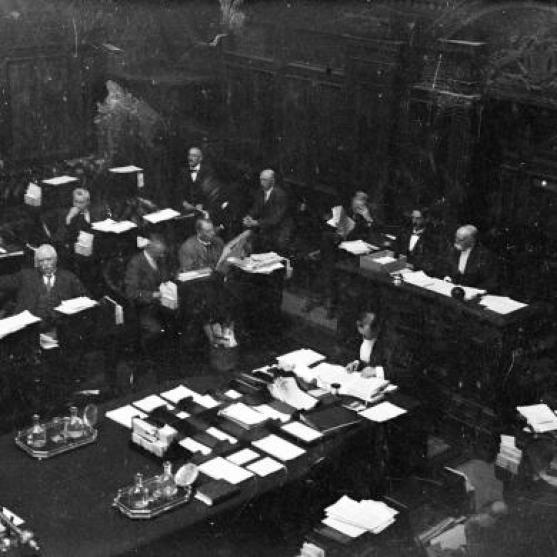Discover WW1
David Green examines New Zealand's role in the post-war Paris Peace Conference where the Treaty of Versailles was negotiated – its first appearance on the international stage in its own right.
On 14-15 March 1919, New Zealand troops based at Sling Camp in England rioted. As a way of keeping the soldiers occupied after the riot, a massive kiwi surveyed by Sergeant Major Victor Low was carved into the hillside above the camp.
Not all of our First World War memorials were built on New Zealand soil after the war. In 1919 the government began a project to build memorials halfway around the world on the very battlefields where New Zealanders had fought.
Following the Armistice of 11 November 1918, the Allies quickly sent their armies to occupy the Rhineland and ensure that Germany would not break the ceasefire. Did you know the New Zealand Division was stationed there until March 1919?
On 10 December 1918, in what became known as ‘The Surafend Incident’, New Zealand, Australian and British soldiers raided a Palestinian village named Sarafand al-Amar and killed about forty Arab civilians in retaliation for the murder of a New Zealand soldier. In this article, historian Terry Kinloch explains what happened.
Why did New Zealand soldiers use a minimising, laconic style to describe being wounded?
Those lucky enough to be born towards as peace was coming were sometimes given peace related names.
New Zealand's official war photographer was on the ground during the last major action by the New Zealanders in the Great War. See how he captured the Battle of Le Quesnoy of 4 November 1918.
What does a small knotted horse-hair watch-guard tell us about the experience of conscientious objectors in Paparua Prison during the First World War?
Did you know there were five by-elections in 1918? The results shook the political establishment, and suggested that there was significant disquiet amongst the public about the government's wartime policies.
